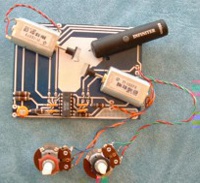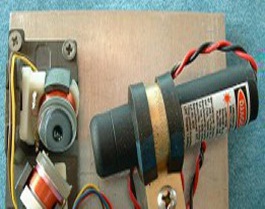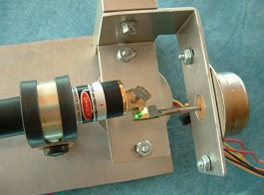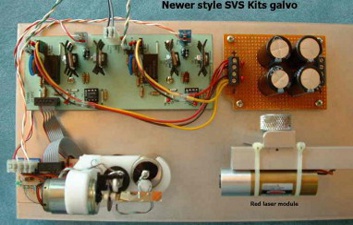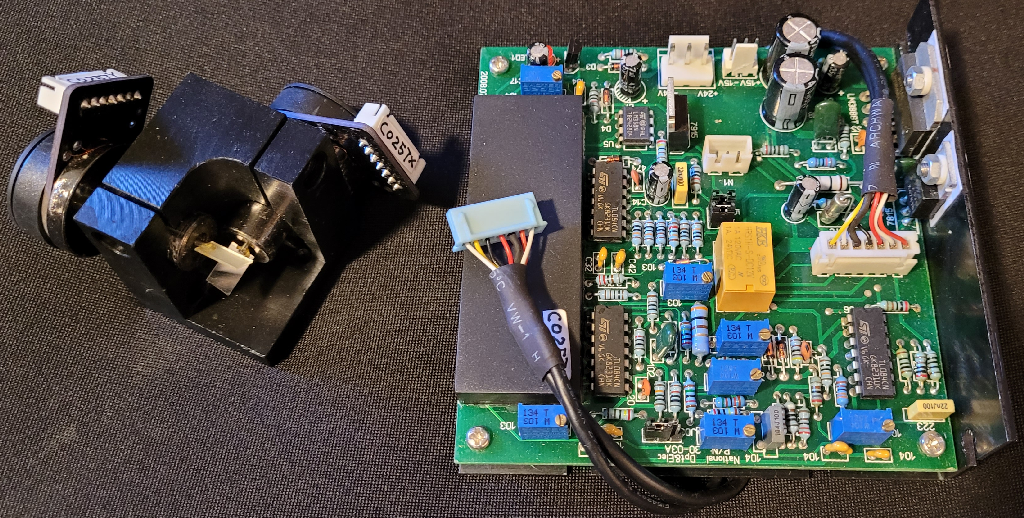|
|



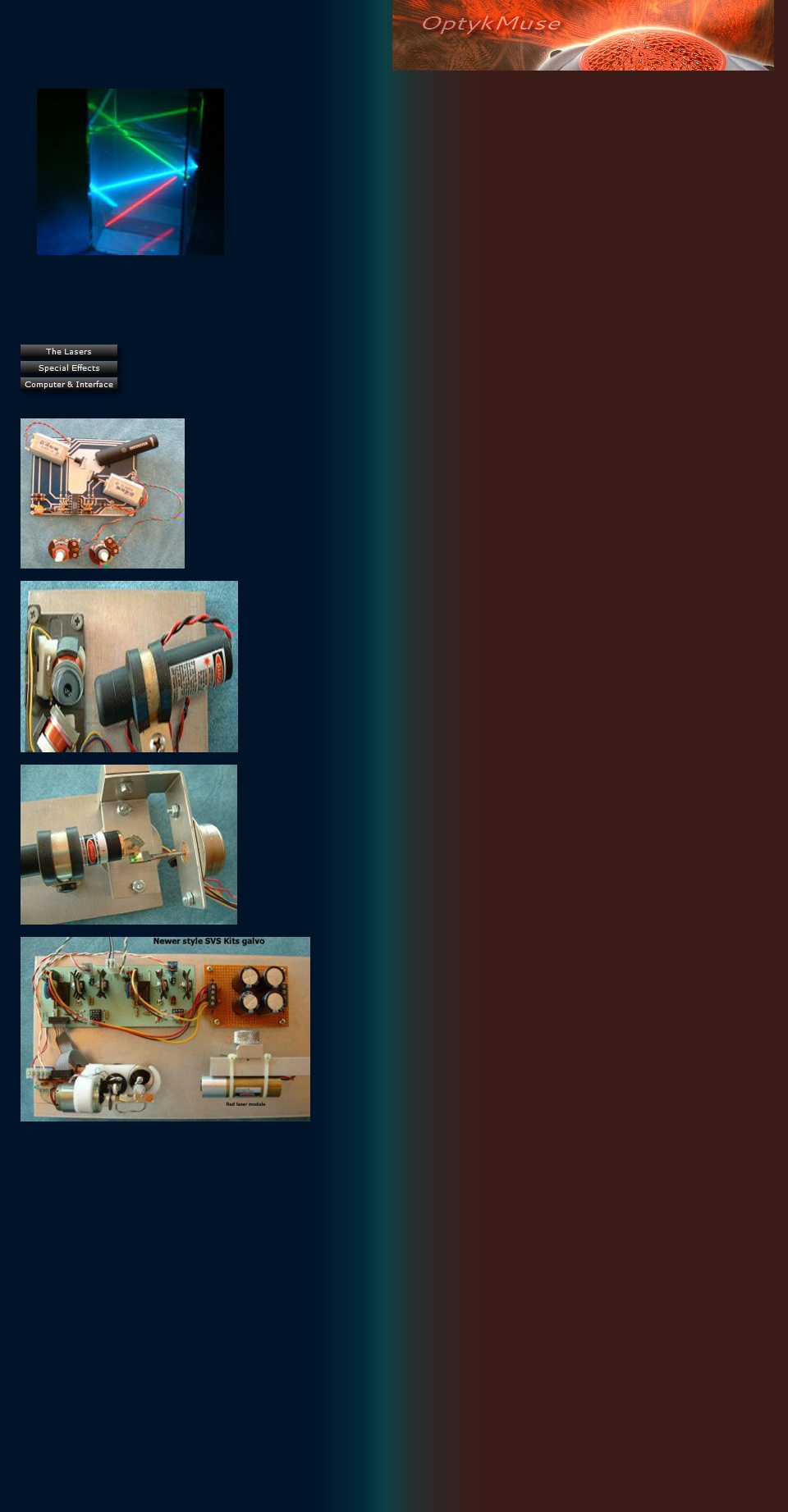





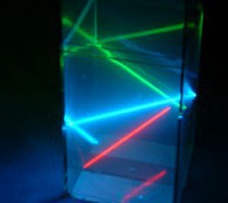
This little unit was my first attempt at building a 'usable' laser scanner. I obtained it from
eBay, like almost every piece of laser equipment I have, for about $15 or so. Not too
bad for starters. Anyway, I decided to design and build an electronic X/Y controller for
this little scanner, anxious to see what it was capable of. I added blanking (explained
elsewhere on this site) to make things a little more interesting, and had myself a
rudimentary laser "projector" when completed. A laser projector is normally a complete
system including a scanner, a scanner driver, a laser, a computer interface, a
computer, and laser show control software. This projector incorporates just a scanner
and a hardware controller with knobs to vary the pattern and blanking. It was fun, and
still is, but it is still very limited in capability. This two axis mirror assembly was
salvaged from an old laser disk player.
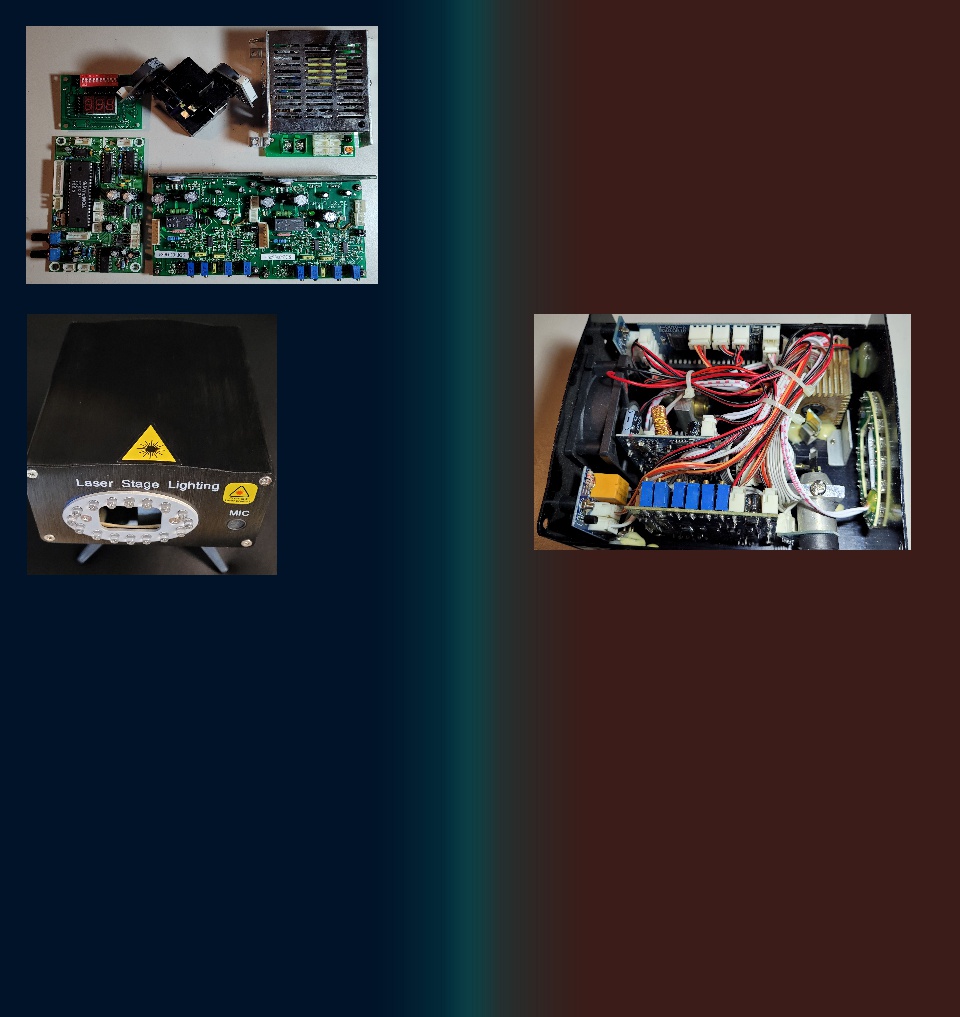
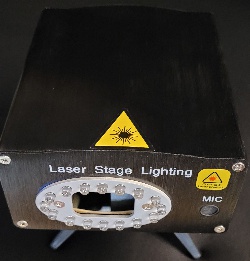
Laser Show Hardware
Various Types Of Laser Scanners, Lumia Effects, Foggers, Other Hardware
If you are reading this page you already have an interest in lasers, and maybe you've
even seen a laser show and wondered how they do that. Waving a laser pointer around
in the fog, on a wall or ceiling, or even on a movie screen (sure way to get kicked out of
a theater) is fun for a little while, but it instantly becomes annoying to those around you
and leaves you wanting more... thinking to yourself "sure would be cool if I could make
this do what I saw at that planetarium laser show".
The equipment on this page is all hobby grade and was very inexpensive (especially compared to commercial grade laser projectors). Most (maybe all) of this could be found on ebay at some point, some of it is salvaged from other equipment (like laser disk players for instance), and some if it is newer higher quality stuff I purchased more recently on eBay. Anyway, I hope you find this interesting and informative. Read on...
The equipment on this page is all hobby grade and was very inexpensive (especially compared to commercial grade laser projectors). Most (maybe all) of this could be found on ebay at some point, some of it is salvaged from other equipment (like laser disk players for instance), and some if it is newer higher quality stuff I purchased more recently on eBay. Anyway, I hope you find this interesting and informative. Read on...
There are several different types of hardware that work together to make up a laser projection system. The following links will take
you to the separate pages that describe the different aspects of a system.
Laser Show Projector Hardware
The laser "scanner" pictured here is one of the more common 'beginner' type units you might see
advertised in science or electronic hobby equipment catalogs and magazines. It uses mirrors
attached to low voltage variable speed DC motors to create limited circular patterns, but this is
very much more desirable than just flicking a laser pointer randomly about. These are very
inexpensive and fun for a while, but their functionality is limited to "spirograph" type images.
Another variation of this design is to add another motor to increase the complexity of the designs.
A small step up from the above scanner is this unit comprised of two modified stepper
motors. They have hard stops attached which prevents them from spinning like they
normally would when actuated, as well as having lengthened shafts with very small
lightweight mirrors epoxied on. With just amplified audio driving these you can get
more intricate patterns projected since they are much more responsive than the little
voice coil type scanner above, with it's much heavier mirrors. Actually, the mass and
dimensions of the mirrors is very important to the responsiveness of the scanner, along
with several other factors including the mass of the rotor and the drive circuitry. This unit
was slightly more expensive than the voice coil scanner above, but worth the little extra.
But there are better scanners still...
These two scanners were kits 'back in the day' which included a pair of
interesting low mass motors, the driver electronics board, and a computer
interface. Sold by a small company called "SVS Kits" (no longer
available), these units were probably closer to a projector than a scanner,
but it is shown here complete because this is the way they came (as
purchased, you guessed it, on eBay). After mounting the parts on some
aluminum plates, I had high expectations that they would solve my
problem of only having swirly lines, which is the best the scanners above
could manage. Actually I purchased the upper (new style) one first and
then later another one I also found on eBay (an earlier version) but soon
discovered they very difficult to align and tune. Once properly aligned,
these were capable of producing actual graphics, which my previous
scanners could not. Problem is, they would not keep working properly and
failed before or during the few shows I did using them, which was very
frustrating. Since the introduction of the very inexpensive scanner / driver
amp sets available from China, I have given up on the SVS units (until I
get the urge to continue working on them) in favor of the new ones I've
purchased, like the one below...
This is one of the newer scanners I've received more recently. This one is
good for about 25K points-per-second (PPS) which is fast enough for
some pretty nice graphics. The card beside the scan head is one of two
that came with it. There are also two power supplies, not shown. The cost
of these has come down to a level where just about anyone can afford to
purchase just for the fun of it and put together your own pretty nice laser
show projector. I think I paid about $90 or so for this set. This just needs to
be mounted to a solid plate along with the boards and power supplies and
it will become usable. It will need an interface to the computer so the laser
show software can access it. Now being retired, I'm finally beginning to
work on all of the projects I've stored for this time... :)
Several forms of scanners are described below:
This is another one of my newer scanners which came with some extra
hardware - It has a scanner head and boards similar to the ones above but
also included a board with some pre-programmed shapes / sequences as
well as a DMX decoder board that can enable DMX control of the preset
patterns that can be displayed. There is an ILDA connector also so it can
be driven from a homebrew or commercial ILDA interface from a computer
running laser show software.
Here is an example of a complete laser
projector, although a kind of limited
one. It has only red and green lasers (if
you look close you can see both of
them) and the scanner is not real fast
(don't know the PPS specs) but it does
do some graphics and it has sound
sync that changes the projected
pattern to the beat of any music that's
playing in the same area as the
projector. It was cheap and is kind of
fun. The blue LED's surrounding the
window can illuminate fog if it's present,
like from a fogger or whatever.






